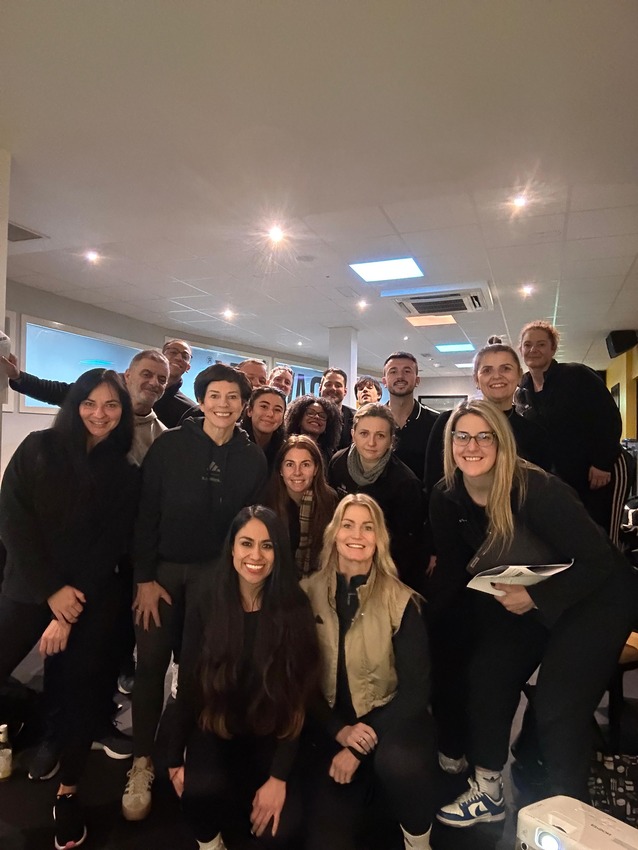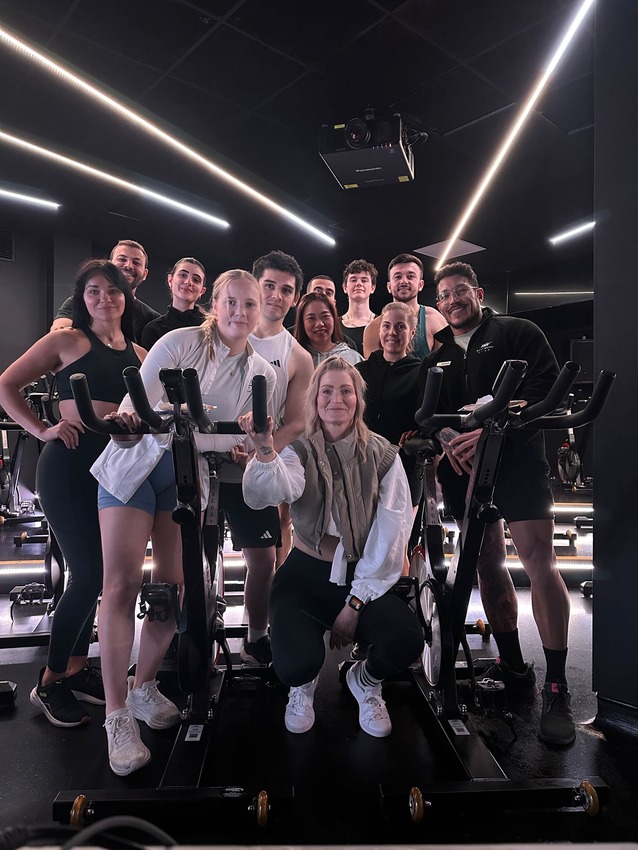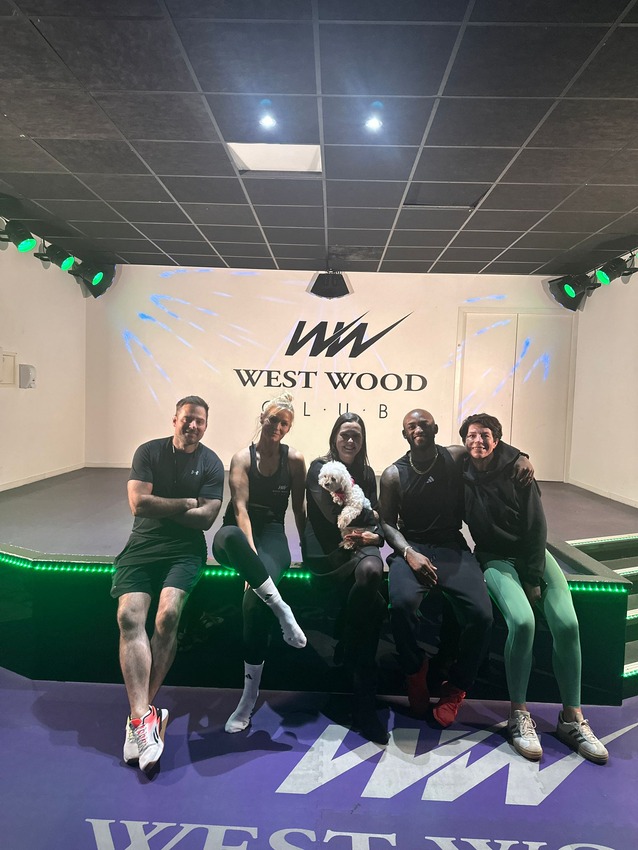
Tell us about your role, Luke.
I look after staff development, recruitment, and training and the management of our fitness facilities. I consider how we interact with members through programs, PT, group training or any other modality. My goal is to increase member satisfaction and identify strategies to increase member engagement.
Our members are very much a leisure club member, they have access to climbing walls, tennis courts, swimming pools, soft play and more! We cater to many different demographics, so we’re always taking that helicopter view of how we can improve.
What problem did you seek to address with the GFM course?
We have brilliant gym managers, who wear many different hats. As part of their role, they do a lot of teaching. They’re in the thick of it in the studio. I wanted to empower them to think critically about the class timetable with a managerial lens and increase their confidence to question how it serves members’ varying interests, age demographics and capabilities. I wanted to give them an understanding of the possibilities of what they could do with the class timetables – which the GFM really delivered on.
What led you to GFM as the solution?
Our Les Mills customer experience representative Lucy is always asking how she can best support us. I share what we're trying to do on the ground, and she recommended the GFM course as the solution to support with the outcomes I was looking to achieve.

How did the GFM help your team think differently about how they optimize the timetable?
It refreshed their approach and helped them embrace a ‘test and learn’ attitude. Sometimes gym managers or class coordinators inherit the legacy of a predecessor, and become afraid to try something new, or take risks. The GFM removes preconceived ideas about things like time slots. There’s a misconception that classes should start on the hour or in 15-minute increments. GFM exposed them to the possibility of reducing class times and the opportunities that opens, like starting classes at a time that allows us to close the gap and create class links. Then, we help a member go from BODYPUMP into BODYBALANCE and adapt the length, so they’re not exhausted by doing a two hour workout.
If they can create a timetable that supports members to come to the studio and get their strength, cardio and stretching fix in one session, it’s a more fulfilling visit. That’s reflected by the ripple effect we’ve seen which has directly increased class attendances – we’ve seen significant growth and increased attendance by up to 30% in some clubs.
What have the team taken from the test and learn approach?
The first piece is understanding member need. You can't facilitate a member need if you don't understand what that is. We’ve had some unexpected results playing with traditionally ‘off peak’ timings, with trial slots experiencing good turnouts. It’s encouraged the team to explore options rather than thinking they might make a mistake. If it doesn’t work, it's not a mistake, you just learned there isn’t demand for a class at that time. So, can we put in a different class on that might yield more?
A key priority for us is broadening class attendance. We want to reach conventional gym floor users and introduce them to the studio. The introduction of FUNCTIONAL STRENGTH™ and other Les Mills strength classes has helped. But we’re also targeting ‘new’ members, especially those who are on their first fitness journey. Making classes accessible to that audience is key. We used SMART START to support with that this year, reminding members at the top of every class - if after 20 minutes you feel you've had enough, it’s ok to leave.
How are you working to attract new members?
We take marketing seriously, by harnessing digital outputs as well as in-club at key member touchpoints. We have a full-time social media staff member and we’re supporting that with external strategic advice. We’re aligning those things with feedback from the in-house teams. They provide the guidance on what we're trying to do or who we're trying to reach, and I feed all that back into the social media team.

How did the GFM benefit your Instructors?
The GFM has deepened and refined their knowledge. It breaks down the nuances of why strength, cardio, cycle and mind/body differ and what that means for members’ decision making. Breaking that information down helps segment their knowledge and deliver more impactful classes, it’s been powerful to witness. They’re clearer in sharing what’s about to happen and offering specific outcomes based on the programs they’re teaching. It’s elevating the member experience with in-depth knowledge.
Why did you create the role of program champions?
We have large teams – some of our clubs have 27 trainers, all in-house – and we can’t expect our gym managers or class co-ordinators to be a champion for every program. In our Clontarf club, for example, we have 10 programs. By delegating to people who show great understanding of the essence, leadership, and technique in individual programs, we unleash that expertise, because they're already looked up to as leaders. It made sense for us to use them as a conduit to help us train the staff. It unlocks my team’s time and embeds a sense of ownership in the program champions who can then lead out quarterly launches, co-ordinate how event days play out – allocate tracks, communicate the message we’re trying to get across with the new release. And of course, they’re master performers, so they know how to deliver an amazing experience for members.
How do you build a strong in-house Instructor team?
It’s a priority for us to have full control over what our members experience. With that comes all the benefits for the Instructor – we put in a lot of time developing them, ensuring their journey from qualifying to becoming a really great performer is seamless. When we recruit experienced Instructors, they can be skeptical, because they’re used to making their own classes. But once we get them under the hood of a Les Mills workout, it’s a change of mindset – a headache removed. We also recruit from the studio, helping our fans become Instructors and inspire the next set of members!
What role do your Instructors play in Marketing?
Word of mouth from our Instructors is crucial. Our members look up to them. In an environment where there’s so much fitness content out there, the question is — is it safe? Will it get the outcomes people want? When you have someone with science-backed knowledge who can guide members to the outcomes they want in a safe environment, that’s a real value add. There’s a lot of contradiction in fitness right now, so being clear, concise, and specific with information is crucial.

How has the GFM course has impacted your role?
Upskilling the rest of the team has freed up my time. Previously, there was a tendency to look to me for development ideas, or guidance. It’s great to now have more voices, ideas and opinions in the room – because ultimately it benefits our members. And what’s great is that the GFM is an industry-standard that the team is taught, rather than my opinion. So now my gym managers and class coordinators are starting to understand the industry on a deeper level – they’ve been given a North Star to aim for that’s underpinned by credible sources and industry leaders.
What would you say to other operators considering the GFM?
Every day is a learning day, no matter how long you're in the industry! I went on the course, and I had a good bit of experience, but I came out of it with so many new and interesting perspectives that I could leverage within our clubs to get more out of the timetable and give our members a heightened experience.
There’s always new things coming down the line. That's what we like about the GFM course – it’s bang up-to-date guidance on the current state of play, backed by research. I’d say go in with an open mind, with the perspective that you're looking for things to improve your day-to-day operations – and you're going to find lots of stuff in there.
You’re experiencing high demand for THE TRIP. What opportunities are there for clubs in the cycle space?
THE TRIP is a showcase class where we’ve had to offer more classes because demand is so high – classes are always full. I’d compare what Les Mills has done with THE TRIP to artists like Madonna, who constantly evolve. Cycle needed a reinvention and this workout has fulfilled that need. People are highly visual now, and it’s a showcase class that provides a real experience as well as a workout.
We’re putting a big onus on our cycle offering, including SPRINT. I try to educate the general gym goer about the benefits of a short, intense class. They might want to look better or build a bit of muscle and strength. I want to educate them about how their goals in the gym can be supported by this class.
What's next for West Wood?
We’ve got quarterly workshops coming up. It’s a great chance to get together and upskill Instructors. And we’re exploring launching LES MILLS CEREMONY across all our clubs by September. We have the facilities to do it with the full boutique fit-out, and the STUDIO version. Circuits needed a reinvention. Ceremony is new and fresh, and it appeals to a new type of member that might previously have stayed away from the studio. It's winning them over because it's a total body workout that’s easy to recover from at an easy access point. There is lots of variance, so it can be adapted for all levels of ability.
We're also building a purpose-built Ceremony and CONQUER studio, so that's exciting. There’s a lot for members to look forward to!
Want to tap into over 50 years of group TRAINING experience?
Contact your Les Mills customer experience partner to learn how your club can access the latest Group Fitness Management training or register your interest below.
READY TO UNLEASH YOUR NEXT GENERATION OF MEMBERS?
Les Mills has crafted a new series of programs to meet the specific demands of Gen Z and put your club in the fast-lane for growth.
DISCOVER MORE
